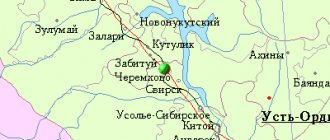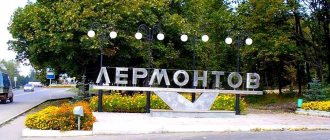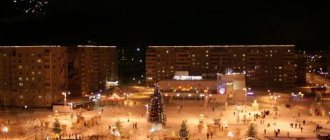Let's decide together
The garbage has not been removed, there is a hole in the road, the streetlight is not on? If you encounter a problem, report it!
Head of the municipal formation urban settlement "City of Zakamensk" - Tsyrenov Mikhail Sergeevich
And about. First Deputy Head of the municipality of the urban settlement "City of Zakamensk" - Skorobogatova Irina Vyacheslavovna
Popov Vladimir Dmitrievich - Deputy Head of the Administration of the municipal formation of the urban settlement "City of Zakamensk" for housing and communal services
Gomboev Grigory Choizhilovich - Director of MKU "City Economy"
Address: 671950 Zakamensky district, Zakamensk, st. Lenina, 23
Phone: 8(30137) 44-370
Email: This email address is being protected from spambots. You must have JavaScript enabled to view it.
NLA of the administration
- Resolution No. 374 dated October 29, 2018 On participation in the All-Russian competition for the best projects to create a comfortable urban environment
- Resolution No. 301 of August 2, 2018 on the transfer of budgetary powers
- Resolution No. 214 of June 4, 2018 on the park
- Resolution No. 198 dated May 23, 2018 On approval of the Administrative Regulations for the execution of the municipal function “Exercising municipal housing control on the territory of the municipality”
- Resolution No. 165 dated 05/03/2018 On amendments to the resolution of the head of the municipal formation of the urban settlement "Zakamensk City" dated 01/09/2018 No. 001
- Resolution No. 47 dated February 27, 2018
- Resolution No. 16 of January 24, 2018 On the provision of an urban development plan
- Resolution No. 17 of January 24, 2018 On the transfer of residential premises to non-residential premises
- Resolution No. 14 of January 23, 2018 Administrative regulations on the provision of land without bidding
- Resolution No. 13 of January 23, 2018 Administrative regulations on redistribution
- Resolution No. 001 of 01/09/2018 On approval of the hourly tariff rate
- On approval of the control procedure
- Resolution No. 419 dated December 8, 2017
- Resolution No. 393 dated November 17, 2017
- Resolution No. 370 dated October 25, 2017
- Resolution No. 375 dated October 31, 2017
- Resolution No. 369 dated October 25, 2017
- Resolution No. 360 dated October 23, 2017
- Resolution No. 305 of 08/30/2017
- Resolution No. 304 of 08/30/2017
- Resolution No. 303 of 08/30/2017
- Resolution No. 302 of 08/30/2017
- Resolution No. 301 of 08/30/2017
- Resolution No. 300 of 08/30/2017
- Resolution No. 299 of 08/30/2017
- Resolution No. 298 of 08/30/2017
- Resolution of Adm Reg. No. 297 from 08/30/2017
- Resolution “On Amendments and Additions to the Regulations on the Commission for Compliance with the Requirements for the Official Conduct of Municipal Administration Employees”
- Resolution 249 of July 26, 2017
- Resolution No. 214 dated June 16, 2017 “On approval of the Regulations on the procedure for providing residential premises in the specialized housing stock of the municipal formation urban settlement “City of Zakamensk”
- Resolution No. 208 dated June 23, 2017 On approval of administrative regulations for the provision of municipal
- Resolution dated March 10, 2017 No. 64 “On the appointment of public discussions on the object “Reconstruction of heat supply networks with the construction of a central boiler house in the city of Zakamensk, Republic of Buryatia”
Content
- 1 History 1.1 Gornyatsky village
- 1.2 Town
- 1.3 In the post-war period
- 1.4 Post-Soviet era
- 2.1 Physiographic location
- 4.1 City Park
- 6.1 Preschool education
- 7.1 Industry
- 8.1 Printing
- 12.1 Topographic maps
Income information
- Information on the income of the Head of the Municipal Enterprise of the State Enterprise City of Zakamensk for 2022. Information on income, expenses……….of the head of the Moscow Region State Enterprise Zakamensk for 2022. Information on income, property, deputies of the city of Zakamensk for the period from 01/01/2018 to 12/31/2018 INFORMATION ON INCOME, PROPERTY AND LIABILITIES OF A PROPERTY NATURE PRESENTED BY DEPUTY OF THE COUNCIL OF DEPUTIES OF THE CITY MUNICIPAL FORMATION SETTLEMENT "THE CITY OF ZAKAMENSK" for 2022 Information on income, property and property-related obligations of persons holding municipal positions and municipal service positions in the administration of the Municipal Municipality "City of Zakamensk" for 2022 Information on income, property and property-related obligations of deputies of the city Council of Deputies, their spouses and minor children for the period from 01/01/2016 until December 31, 2016 Information on income, property and property-related liabilities of municipal administration employees, their spouses and minor children for the period from 01/01/2016. to 12/31/2016-1 Information on income, property and liabilities. property character….. for 2016
Story
It was founded in 1893 as a mining settlement called Gorodok
.[
citation needed
] Mining of the local tungsten and molybdenum reserve began in 1933.
It was granted city status in 1944.[ citation needed
] In 1959 it was renamed Zakamensk.[
citation needed
] from the Russian term
Zakamen
which has been used for the region since the 17th century.
The word means behind the rocks
in Russian, referring to its location outside the Khamar-Daban Mountains.
Economics[ | ]
Industry[ | ]
Main industries: mining, food.
Large enterprises:
- The Dzhida tungsten-molybdenum plant is a city-forming enterprise. Ore concentrates were supplied mainly to factories in the Urals. Closed in 1998
- Enterprise "Zakamensk" - extraction and processing of waste from the Dzhida VMC
- The Liteishchik enterprise is the only production facility in Buryatia that produces spare parts for processing and mining equipment.
- Zakamensky meat processing plant
- Zakamensky Brewery
- Zakamensky Bread Factory No. 7
Retail[ | ]
Supermarket "Absolut"
- trading;
- trading;
- trading;
- trading;
- meat market;
- hotel and restaurant "Sona".
- trade
Geography[ | ]
Physico-geographical location[ | ]
Zakamensk
View from the mountain. The city is located in the southwest of Buryatia near the state border with Mongolia, 404 km from Ulan-Ude, in the central part of the Dzhidinsky ridge. It is located in the mountain-taiga area of the Modon-Kul River valley, a right tributary of the Dzhida River. The height of the bottom of the mountain valley is about 1100 m above sea level; medium-high mountains with absolute elevations of 1300-1400 m are adjacent to the city.
Ecology[ | ]
The city is located in the mountain taiga zone, remote from other industrial centers, in the valley of a small watercourse originating in Mongolia. However, the environmental situation in most of the city and its surroundings is extremely unfavorable. Ecologically, the territory of Zakamensk and the former Dzhida tungsten-molybdenum plant is the most disadvantaged part of the Baikal natural territory[17].
Environmental problems[ | ]
Dust storm before a thunderstorm
The Dzhida plant is a polluter of all components of the natural environment. The ores that were mined by the tungsten-molybdenum plant contain chemical elements belonging to various hazard classes: class I - cadmium, lead, zinc, fluorine; to class II - molybdenum, calcium; to class III - beryllium, tungsten, bismuth, rubidium, cesium; in addition, rocks with high sulfide contents were mined. When enriching tungsten-molybdenum ore by flotation, toxic reagents were used - kerosene, sulfuric acid, xanthate, pine oil, liquid glass, etc., which also accumulated in tailings. In total, during the period of operation of the Dzhida tungsten-molybdenum plant, 44.5 million tons of waste were generated. Partially man-made waste was used to fill roads, city sites, and build houses. In the process of wind spread, transfer and erosion by surface and underground waters, soils, vegetation, air, underground and surface waters became contaminated with toxic compounds [17] [18].
Modonkul River Pebbles in the bed of the Modonkul River, covered with a crust of salts.
The main sources of pollution are technogenic sands from the tailings of waste from the processing factories of the closed Dzhidakombinat, and mine, adit, quarry, and basement waters of the Gudzhirka, Inkur streams and the Zapadnaya adit, containing water-soluble forms of ore elements, and polluting soils in the city through surface and underground runoff and the waters of the Modonkul and Mirgensheno rivers. Mine waters and tailings are characterized by the greatest contamination. In mine waters, the excess of the maximum permissible concentration of some elements (, , , , , , , etc.) from hazard classes I-III near pollution sources reaches tens and hundreds of times [17][19][20], in the tailings the content of heavy metals reaches 100 and more than the maximum permissible concentration, according to the indicators of total geochemical pollution, the state of the soils in the suburbs and the city itself is assessed as dangerous, in some places as extremely dangerous [21][22].
The area of environmentally unfavorable territory is 867 hectares, including 487 hectares in Zakamensk (68.53% of the city’s territory), 380 hectares are mine workings and overburden dumps[17][23].
On the territory of the city itself, according to the total indicator of pollution with chemical elements (Cu, Zn, As, Pb, Mo, W, Cd, Sb), the following are distinguished: - an environmental disaster zone with an area of 281.3 hectares (39% of the city's territory) - an environmental emergency zone with an area of 205.8 hectares (29% of the city’s territory)[17].
The situation is aggravated by the extremely unfortunate location of the first tailings dump, closed in 1958 - on a hill, on the outskirts of the city. As a result, during rains, heavy metals migrate with storm and groundwater through densely populated areas of the city, infecting the right bank of the city with dispersal flows of water-soluble metal compounds. Also, with strong winds, dust storms are not uncommon, forming a tail of dispersion of technogenic sands along the foot of the mountain with a length of 15 km[17].
As a result, the Modonkul River is one of the most polluted water bodies in the Baikal region[17]. Research has revealed
Measures to eliminate sources of environmental problems[ | ]
Territory of the liquidated tailings dump Reclamation on the territory of the liquidated tailings dump
The working version of the project “Elimination of the negative impacts of technogenic tailings from the Dzhidinsky tungsten-molybdenum plant in the Zakamensky district of the Republic of Buryatia” (first stage) was developed back in 2007 by order of the State Committee for Nature Protection of the republic[24]. In 2010, the republic’s authorities introduced the issue of eliminating the tailings dump as a proposal to the Federal Target Program “Protection of Lake Baikal and Socio-Economic Development of the Baikal Natural Territory.” The federal authorities planned to allocate 4 billion rubles for project activities until 2022. This project will be a pilot for the federal target program to eliminate accumulated environmental damage.
Within the framework of the republican program “Environmental Safety in the Republic of Buryatia for 2009-2011 and for the period until 2022”, with the involvement of federal and regional sources of funding, the implementation of the first stage of the project “Elimination of the environmental consequences of the activities of the Dzhidinsky Tungsten-Molybdenum Plant” was started. The competition for the execution of work on this project was won by Zakamensk JSC; during its execution, rocks from the Dzhida tailings dump with a volume of 3.2 million tons, covering an area of 452 hectares, were moved to a dump in the Barun-Naryn pad for the purpose of their further processing at an enrichment plant ZAO "Zakamensk"[17][25][26].
The contractor under the state contract for the “second stage of measures to eliminate the environmental consequences of the activities of the Dzhidinsky tungsten-molybdenum plant in the Zakamensky district of the Republic of Buryatia” in 2011 became Gidrospetsstroy LLC[26]. The project for the second stage of work did not include a program for medical and social rehabilitation of the population, which led to heated public debate[27][28]. As a result, the government of Buryatia promised to allocate funds for medical research to assess the health status of the population of Zakamensk. This work will be coordinated by the Buryat branch of the Federal State Budgetary Institution SB RAMS “Scientific Center for Problems of Health, Family and Human Reproduction”[29][30].
During the second stage of work, the removal of man-made waste from the Dzhidinsky tailings dump, the construction of several complexes of treatment facilities near the city and mines for the treatment of stormwater, mine, mine and dump waters, anti-erosion measures, demolition of abandoned buildings and structures of the plant, biological reclamation on area 613 will continue. .8 hectares, including within the city, systematic monitoring of the environmental situation will be carried out[26].
In 2016, the first results of comprehensive medical, sociological and biogeochemical studies conducted by scientific specialists from the Federal Scientific Center for Medical and Preventive Technologies for Managing Public Health Risks of Rospotrebnadzor were published[31]. In the course of scientific research, a hygienic assessment of the quality of environmental objects (atmospheric air, soil, drinking water, food products) was carried out, the health status of the child and adult population of the city of Zakamensk and the village of Mikhailovka was assessed, statistical data and scientific publications were analyzed.
Studies of drinking water sources revealed excesses of standards for , , and in samples from wells. The water in the centralized water supply system meets hygienic requirements; in private wells, an excess of the maximum permissible concentration for Fe content was recorded. The soils, according to their data, are intensely polluted, but when analyzing samples of local fruits and vegetables, dairy and meat products, no anomalies were revealed. Monitoring of dust content in the atmospheric air revealed irregular dustiness in the air; in some samples, heavy metal contents were recorded that did not exceed the maximum permissible concentrations. It is stated that there are risks of developing cancer among the local population. As a result, scientists confirmed the presence of environmental problems, but do not characterize the current situation as an environmental disaster or an environmental catastrophe[32].
Attractions[ | ]
Maanin Dugan
The central district consists of typical 3-5 storey buildings, the rest of the city is occupied by an industrial zone and the private sector.
City Park[ | ]
East of the city center there is a city park and a boarding house for war and labor veterans “Mountain Air”.
Maanin dugan[ | ]
At the entrance to the city center there is Maanin Dugan (Lenin Street, 14).
Mineral spring[ | ]
In the vicinity of the city there is a mineral spring mmmm Shanaagay Arshan[50].
St. Nicholas Church[ | ]
St. Nicholas Church is an Orthodox church, belongs to the Ulan-Ude diocese of the Buryat Metropolis of the Russian Orthodox Church. To the south of the center is the Church of St. Nicholas the Wonderworker (Krupskaya Street, 5).
Peter and Paul Church[ | ]
The Peter and Paul Church is an Orthodox church, belongs to the Ulan-Ude diocese of the Buryat Metropolis of the Russian Orthodox Church.






